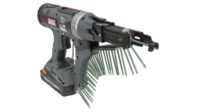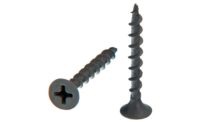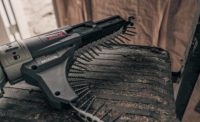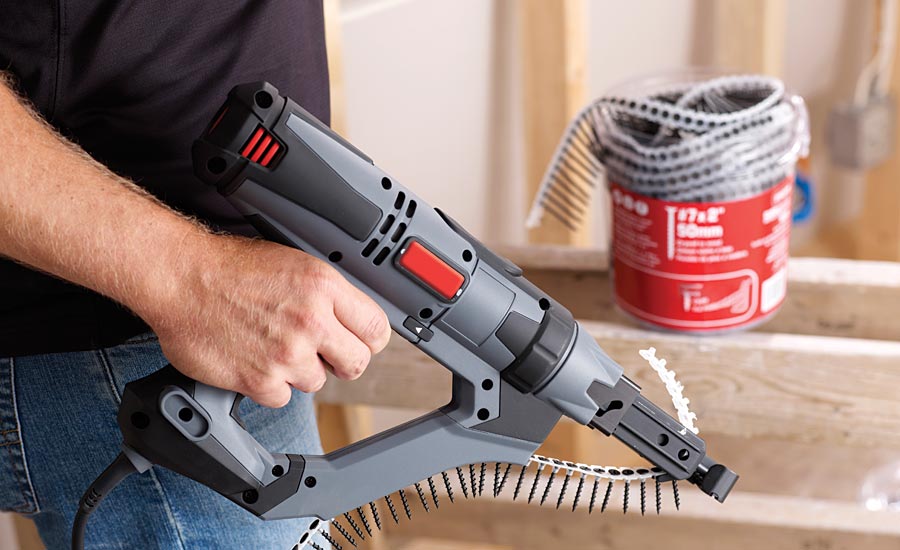Benefits of Auto-feed Screwdrivers
Auto-feed systems are efficient, result in improved workplace safety and reduce lost time and workers’ compensation claims.

Auto-feed systems are efficient, result in improved workplace safety and reduce lost time and workers' compensation claims.

Auto-feed systems are efficient, result in improved workplace safety and reduce lost time and workers' compensation claims.

Auto-feed systems are efficient, result in improved workplace safety and reduce lost time and workers' compensation claims.

Auto-feed systems are efficient, result in improved workplace safety and reduce lost time and workers' compensation claims.




For just about any sheathing application—from drywall to backerboard to subfloor installation—there is a tool for the job. Oftentimes, it is the same tool: an auto-feed screwdriver.
Auto-feed screwdrivers got their start as an upgrade to traditional screwdrivers for drywall applications. Handling loose screws was a challenge for installers as they positioned drywall with one hand and tried to place and drive screws with the other. In response, attachments were introduced which added an auto-feed “head” to a loose screwgun. But these weren’t purpose-built tools, which tended to limit their effectiveness.
Drywall contractors were won over by some manufacturer’s increased speed (as much as up to four times faster than bulk screwdrivers and loose screws), and efficiency. Auto-feed also resulted in improved workplace safety and reduced lost time and workers’ compensation claims. The value when working overhead or with scaffolding was especially obvious.
These same benefits—speed and ease-of-use—can be extended to applications like flooring and decking with the use of stand-up attachments. The introduction of a corner-fit system, which allows better access and screw placement in tight spaces, as well as innovations such as application specific speeds (2,500 and 5,000 RPM) and precision locking depth of drive control have further expanded the usefulness of auto-feed systems.
Building codes which call specifically for screws and safety concerns have also played a role in the adoption of auto-feed systems in window installation, tile roofing and a variety of industrial applications. But auto-feed screw systems haven’t been readily accepted in many difficult commercial construction-based metal applications.
Channel-fit Nosepiece Extends Benefits
In 2016, SENCO introduced a nosepiece attachment for its DuraSpin products especially for commercial construction professionals. Metal-to-metal fastening applications require any auto-feed system to access recessed channels up to 1.8 inches deep. A Channel Fit Nosepiece was specifically designed to make feeding screws in these environments easy. Typical applications include steel decking, hat channel, wall panel construction, resilient channel, metal truss assembly, window framing and aluminum extrusions.
Features of this type of accessory includes:
- Can drive screws 1/2 to 1 inch long
- Ensures proper spacing between fasteners to prevent overlap in tight spaces and to comply with strict commercial codes
- Provides a clear line of sight to improve screw placement in pre-punched holes
- Incorporates grooves to allow shavings and chips under the screw head to escape
Other Advances for Steel Applications
Recently, SENCO received an evaluation report (ESR #3558) from ICC Evaluation Service (ICC-ES) certifying that 24 self-piercing, self-drilling tapping collated screws meet the 2012 and 2015 International Building Code and International Residential Code codes.
The fasteners which gained approval are commonly used for connections involving cold-formed steel framing. Common applications include joining drywall/gypsum sheathing to steel, steel to steel framing, steel sheathing to steel framing, and certain wood to steel sheathing.
If you’re considering an auto-feed screw system, check out the Table above for general parameters.
Looking for a reprint of this article?
From high-res PDFs to custom plaques, order your copy today!













